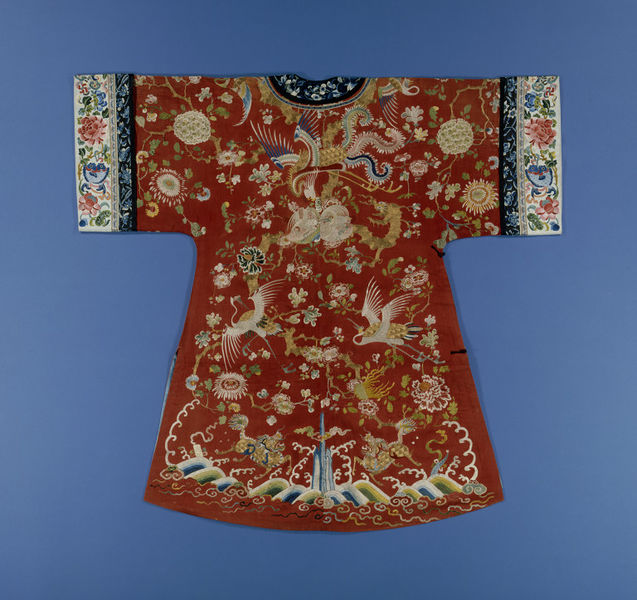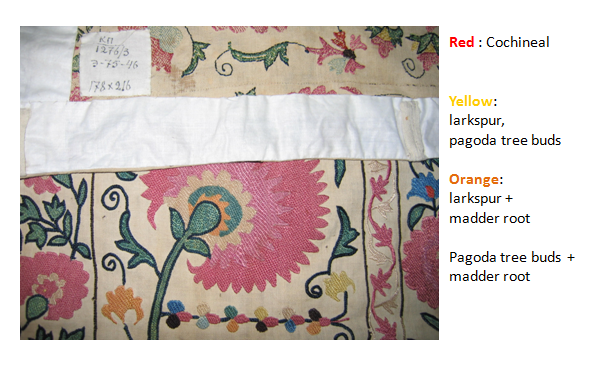Difference between revisions of "V&A T.184-1948, Embroidery on gauze-banded plain weave silk robe, China (late 17th century-18th century)"
(Created page with "== Artifact Information == Suzanis are large, embroidered hangings or coverings that originated centuries ago in what is now Uzbekistan and neighboring parts of Central Asia....") |
|||
| Line 1: | Line 1: | ||
== Artifact Information == | == Artifact Information == | ||
| − | + | The robe is made of gauze-banded plain weave silk with embroidery. This robe is a woman's garment that may be the earliest non-ecclesiastical Chinese garment in the Museum. The grand is a rich red silk that has horizontal bands of fruiting pomegranates (symbolizing a woman with many kids) in gauze weave running across the fabric at widely spaced intervals. Over this, there is shiny embroidered decoration of fruits, flowers, birds and mythical beasts [1]. | |
| − | |||
| − | + | Victoria and Albert Museum, London, UK T.184-1948 | |
| − | [[File: | + | |
| + | [[File:T.184-1948.jpg|center|frame|© Victoria and Albert Museum, London]] | ||
== Summary of results == | == Summary of results == | ||
Revision as of 08:58, 4 August 2017
Artifact Information
The robe is made of gauze-banded plain weave silk with embroidery. This robe is a woman's garment that may be the earliest non-ecclesiastical Chinese garment in the Museum. The grand is a rich red silk that has horizontal bands of fruiting pomegranates (symbolizing a woman with many kids) in gauze weave running across the fabric at widely spaced intervals. Over this, there is shiny embroidered decoration of fruits, flowers, birds and mythical beasts [1].
Victoria and Albert Museum, London, UK T.184-1948
Summary of results
Multiple threads (equal or shorter than 0.5 cm) were removed from the back of the suzani. It was found that the pinkish red thread was dyed with cochineal, an orange sample was dyed with larkspur and madder, another orange sample with pagoda tree buds and madder. Yellow threads were dyed with pagoda tree buds and larkspur.
HPLC profile
Identified compounds
References
[1] Zhang, X. Laursen R. and Osipova S. (2005) "Analysis of dyes in some 19th-century Uzbek suzanis"; Dyes in History and Archaeology To be published.


